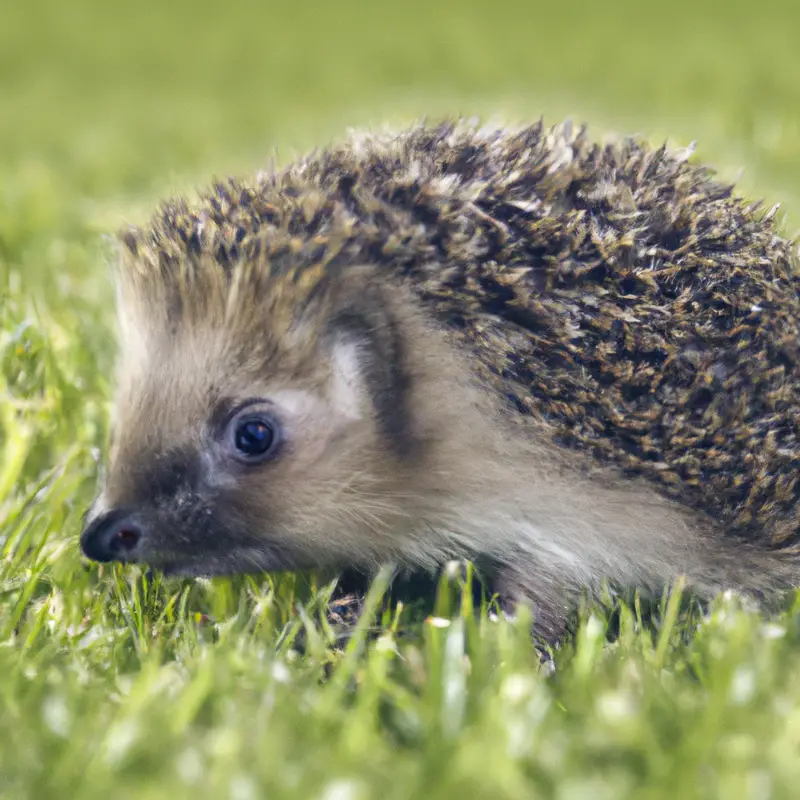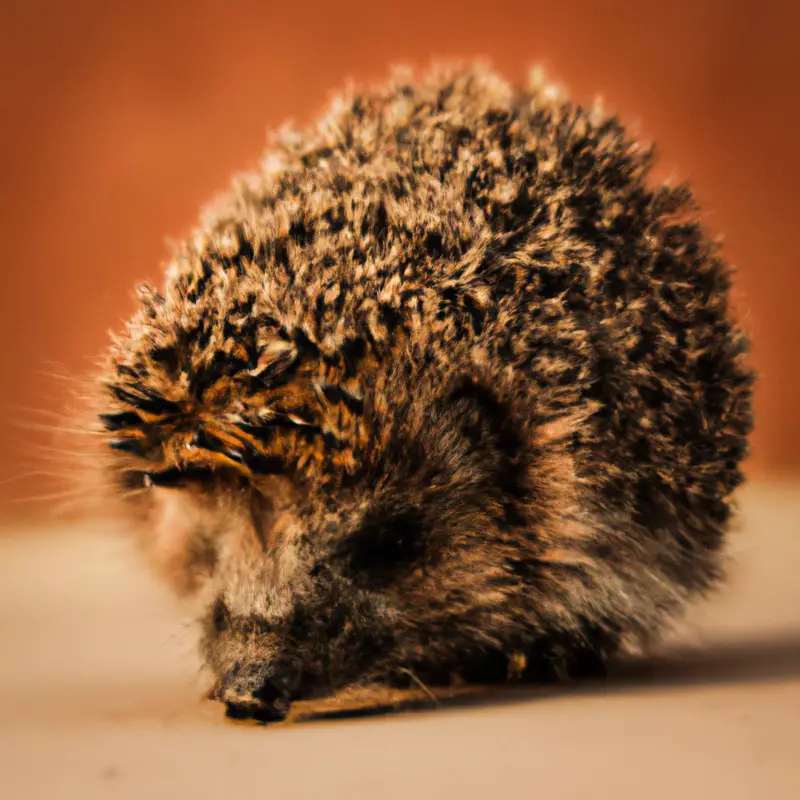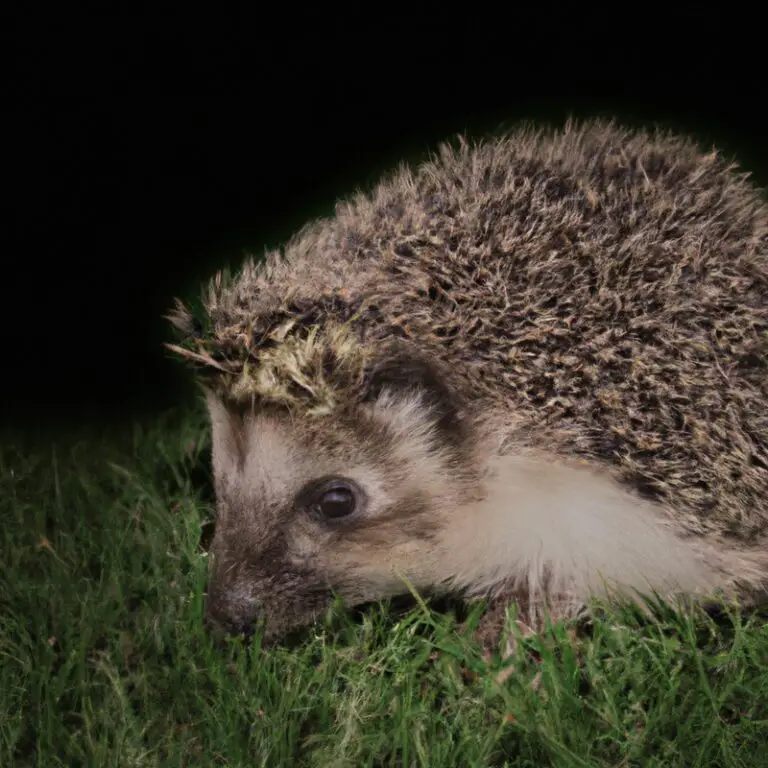What Is The Hedgehog’s Role In Controlling Grasshopper Populations?
Key Takeaways:
- Hedgehogs play a crucial role in controlling grasshopper populations by preying on them.
- The natural predation of hedgehogs helps maintain the balance of grasshopper populations in ecosystems.
- Hedgehogs consume significant amounts of grasshoppers, reducing their numbers and potential damage to vegetation.
- By controlling grasshopper populations, hedgehogs contribute to the overall health and stability of ecosystems.
Are you curious about how nature maintains a delicate balance in ecosystems?
Well, look no further than the humble hedgehog! These spiky creatures may not seem like fierce predators, but they actually play a vital role in controlling grasshopper populations.
In this article, we’ll dive into the fascinating world of hedgehogs and explore their dietary preferences, their effectiveness in controlling grasshopper outbreaks, and the factors that can impact their population.
Join us as we uncover the secrets of these adorable yet powerful insect hunters and their impact on our ecosystems.
| Role of Hedgehogs in Controlling Grasshopper Populations |
| Benefits |
| Hedgehogs are natural predators of grasshoppers. |
| Hedgehogs can help control grasshopper populations by eating them. |
| Hedgehogs keep the grasshopper population in balance. |
| Hedgehogs can reduce grasshopper-related damage to crops and gardens. |
| Considerations |
| Hedgehogs may not be able to completely eradicate grasshopper populations. |
| Other factors, such as weather conditions and availability of alternative food sources, can affect the success of hedgehogs in controlling grasshopper populations. |
| Introducing hedgehogs as a control method may require proper planning and management to ensure their welfare and effectiveness. |
The Importance of Controlling Grasshopper Populations
Controlling grasshopper populations is vital for maintaining the balance and health of ecosystems.
The Role of Hedgehogs in Ecosystems
Hedgehogs play a vital role in ecosystems due to their feeding habits and behaviors. They are natural pest controllers, as they primarily feed on insects, including grasshoppers.
By consuming grasshoppers, hedgehogs help to regulate their populations and prevent them from becoming too abundant.
This is crucial for maintaining a balance in the ecosystem and preventing outbreaks of grasshoppers that can damage vegetation. Additionally, hedgehogs also contribute to nutrient cycling by spreading the seeds of plants they consume, aiding in the dispersal and regeneration of plant species.
So, hedgehogs play an important part in maintaining the overall health and biodiversity of ecosystems.
Understanding the Diet of Hedgehogs
Hedgehogs have an omnivorous diet, meaning they eat a variety of foods.
They primarily feed on insects, such as beetles, caterpillars, and slugs, which make up the majority of their diet.
Hedgehogs also consume small vertebrates, like frogs and mice, as well as fruits, berries, and plant matter.
Providing a balanced and diverse diet is essential for their overall health and well-being.
Avoid feeding them milk or bread, as these can upset their digestion.
Hedgehogs as Natural Predators of Grasshoppers
Hedgehogs are natural predators of grasshoppers.
They play an important role in controlling grasshopper populations by hunting and eating them.
Hedgehogs have sharp teeth and strong jaws that allow them to catch and consume grasshoppers easily.
Their diet mainly consists of insects, and grasshoppers are one of their preferred prey.
This natural predation helps to maintain a balance in grasshopper populations and prevent them from becoming pests in agricultural and natural ecosystems.
Hedgehogs are valuable allies in keeping grasshopper numbers in check.

Factors Affecting Hedgehog Population and Grasshopper Control
There are a few key factors that can affect the population of hedgehogs and their ability to control grasshopper populations.
One factor is the availability of suitable habitat for hedgehogs, including areas with enough cover, food sources, and protection from predators.
Another factor is the presence of pesticides or chemicals that can harm hedgehogs and their food sources, such as insects like grasshoppers.
Climate and weather conditions can also play a role, as extreme temperatures or changes in food availability can impact hedgehog populations.
Finally, human activities, such as habitat destruction or the use of pesticides, can negatively affect both hedgehog populations and their ability to control grasshopper populations.

Other Natural Predators of Grasshoppers
Grasshoppers have various natural predators that help to control their populations.
These include:
- Birds: Many bird species, such as sparrows, swallows, and meadowlarks, feed on grasshoppers. They rely on them as a source of protein, especially during the breeding season when they need to feed their young.
- Mammals: Hedgehogs, shrews, mice, and bats are known to eat grasshoppers. These small mammals play a significant role in balancing grasshopper populations in their habitats.
- Reptiles and amphibians: Lizards, frogs, and toads can be effective predators of grasshoppers. They can catch them with their quick movements and use their long tongues to catch prey.
- Insects: In addition to grasshoppers being cannibalistic, there are other insects that prey on them. Ladybugs, lacewings, and praying mantises are known to feed on grasshopper eggs and young nymphs.
By having a diverse range of natural predators, grasshopper populations remain in check, preventing them from becoming overwhelming.
These predators ensure a natural balance in ecosystems and help to maintain a healthy environment.
Hedgehogs’ Dietary Preferences and Grasshopper Consumption
Hedgehogs have an omnivorous nature and include grasshoppers as part of their diet.
They consume a significant amount of grasshoppers to help control their population.
Hedgehogs’ Omnivorous Nature
Hedgehogs have an omnivorous nature, meaning they eat a variety of foods. They consume both plants and animals, including insects, worms, slugs, and fruits.
Their diet largely depends on what is available in their habitat.
This diverse eating habit allows hedgehogs to adapt to different environments and ensures they have a steady supply of nutrition. So, whether it’s a tasty insect or a delicious berry, hedgehogs have a flexible palate!
Grasshoppers as a Part of Hedgehogs’ Diet
Hedgehogs have a diverse diet, and grasshoppers are indeed a part of their menu.
These small, spiky mammals are known to feed on various insects, including grasshoppers, when they come across them.
Grasshoppers provide a good source of protein for hedgehogs, which is essential for their growth and overall health.
So, if you spot a hedgehog munching on a grasshopper, don’t be surprised! It’s just part of their natural diet.
The Amount of Grasshoppers Consumed by Hedgehogs
Hedgehogs are known to be opportunistic eaters, and their diet includes a variety of insects, including grasshoppers.
They play a role in controlling grasshopper populations by consuming them.
Hedgehogs have sharp teeth and a strong bite, which allows them to catch and consume grasshoppers effectively.
Their natural instinct to hunt and their ability to move quickly make them efficient predators of grasshoppers.
By feeding on grasshoppers, hedgehogs contribute to maintaining a balance in insect populations.
The Impact of Hedgehogs on Controlling Grasshopper Populations
Hedgehogs play a significant role in controlling grasshopper populations.
Hedgehogs’ Role in Regulating Ecosystem Balance
Hedgehogs play a significant role in regulating ecosystem balance by controlling populations of certain species.
They are natural predators of insects, including harmful ones like grasshoppers.
By feeding on grasshoppers, hedgehogs help to keep their populations in check and prevent overgrazing of vegetation.
This benefits the overall health of the ecosystem and promotes biodiversity.
Additionally, hedgehogs also contribute to soil health through their feeding activities, as they eat pests that can damage plant roots.
Their presence can therefore have positive effects on the entire ecosystem.
Quantifying the Grasshopper Consumption by Hedgehogs
To quantify the grasshopper consumption by hedgehogs, researchers have conducted studies using different methods. They have collected fecal pellets of hedgehogs in the field and analyzed them to identify the presence of grasshopper remains.
Additionally, researchers have observed hedgehogs in controlled environments and recorded their feeding behaviors.
These studies have provided valuable data on the amount of grasshoppers consumed by hedgehogs and have highlighted the significant role of hedgehogs in controlling grasshopper populations.
Hedgehogs’ Effectiveness in Controlling Grasshopper Outbreaks
Hedgehogs can be quite effective in controlling grasshopper outbreaks.
They have a natural appetite for insects, including grasshoppers, and can consume a significant number of them in a single night.
Hedgehogs are known for their ability to forage and hunt, making them valuable allies in keeping grasshopper populations in check.
Their presence can help prevent grasshoppers from multiplying rapidly and causing damage to crops or gardens.
So, if you have a grasshopper problem, consider welcoming hedgehogs into your outdoor space to help control the outbreak.
Hedgehogs’ Impact on Biodiversity and Vegetation
Hedgehogs play a crucial role in maintaining biodiversity and vegetation. They help control the populations of pests like insects and rodents, which can have a negative impact on plants and other animals.
By consuming grasshoppers and other herbivorous insects, hedgehogs prevent them from overgrazing and damaging vegetation.
This contributes to a healthier ecosystem and a more balanced food chain. Additionally, hedgehog droppings act as natural fertilizers, enriching the soil and promoting the growth of diverse plant species.
Overall, hedgehogs are important allies in preserving biodiversity and promoting the health of vegetation.
Factors Affecting Hedgehog Population and Grasshopper Control
Habitat loss, predation, climate change, and human activities all play a role in influencing hedgehog populations and their ability to control grasshopper populations.
Habitat Loss and Fragmentation
Habitat loss and fragmentation have a significant impact on hedgehog populations and their ability to control grasshopper populations. When their natural habitat is destroyed or fragmented due to human activities like urbanization or agriculture, it disrupts the hedgehog’s ability to find adequate food sources and suitable nesting sites.
This can lead to a decline in hedgehog populations.
As a result, there are fewer hedgehogs available to control grasshopper populations, which can lead to an increase in grasshopper numbers and potential ecological imbalances. The preservation and restoration of hedgehog habitats are essential for maintaining healthy ecosystems and natural pest control.
Predation and Competition
Predation and competition are two significant factors that affect the dynamics of animal populations.
Predation refers to the act of one animal hunting and consuming another for food.
This interaction helps control the population of the prey species and maintains ecological balance.
On the other hand, competition occurs when multiple animals vie for limited resources such as food, territory, or mates.
This competitive pressure can lead to adaptations and changes within a population, influencing their survival and reproductive success.
Balancing predation and competition is crucial for maintaining healthy ecosystems.
Climate Change and Its Impact on Hedgehog and Grasshopper Populations
Climate change has a significant impact on hedgehog and grasshopper populations.
With rising temperatures and changing weather patterns, hedgehogs struggle to find food and suitable habitats.
This leads to a decline in their population.
On the other hand, grasshopper populations can increase due to warmer temperatures, resulting in greater competition for resources and potential crop damage.
Both species are affected by climate change, impacting their survival and ecological balance.
Human Activities and Hedgehog Conservation
To ensure the conservation of hedgehogs, it is important to be aware of the impact of human activities.
Engaging in the following actions can be beneficial:
- Creating hedgehog-friendly gardens by providing shelter, such as log piles or dense vegetation, and leaving areas unmanicured.
- Avoiding the use of pesticides and chemicals that may harm hedgehogs or their food sources.
- Encouraging responsible waste management to prevent hedgehogs from getting trapped in litter or discarded materials.
- Building hedgehog highways by connecting gardens with small holes or gaps in fences and walls, allowing hedgehogs to roam freely.
By actively considering how our actions affect hedgehogs and making changes accordingly, we can contribute to their conservation and ensure their continued presence in our environment.
Other Natural Predators of Grasshoppers
Birds, insects, spiders, and other mammals all play a role in controlling grasshopper populations.
Birds as Grasshopper Predators
Birds play a crucial role in controlling grasshopper populations. They are natural predators that help keep the grasshopper population in check.
Birds like sparrows, swallows, and starlings feed on grasshoppers, especially during the breeding season when they have young to feed.
They can significantly reduce the number of grasshoppers in an area, helping to prevent crop damage and maintain the balance of the ecosystem. Their predatory behavior helps regulate the grasshopper population.
So, next time you see a bird swooping down to catch a grasshopper, remember they’re doing an important job in controlling their numbers.
Insects and Spiders as Grasshopper Predators
Insects and spiders play a vital role in controlling grasshopper populations. These predators feed on grasshoppers, helping to keep their numbers in check.
Some common examples include praying mantises, lacewings, dragonflies, and spiders like the garden spider.
These predators use various hunting strategies to catch and consume grasshoppers, such as ambushing, chasing, or using webs. Their presence in the ecosystem helps maintain the balance between grasshoppers and other plant life.
Other Mammals as Grasshopper Predators
Other mammals, such as birds, reptiles, and amphibians, can also act as predators of grasshoppers.
They play a significant role in controlling grasshopper populations by preying on them.
Some examples of mammals that are known to feed on grasshoppers include mice, shrews, bats, and certain species of rats.
These mammals help keep grasshopper populations in check, preventing them from causing extensive damage to vegetation and crops.
Frequently Asked Questions (FAQs)
How do hedgehogs catch and eat grasshoppers?
Hedgehogs catch and eat grasshoppers by using their sharp teeth and quick reflexes. When a hedgehog spots a grasshopper, it will pounce on it and grab it with its mouth.
The hedgehog’s teeth help it to effectively hold onto the grasshopper while it is being consumed.
Hedgehogs are known for being skilled hunters, and their ability to catch and eat grasshoppers is an important part of their diet.
Do hedgehogs only eat grasshoppers or other insects as well?
Hedgehogs do not exclusively eat grasshoppers.
They have a varied diet and consume a wide range of insects, including beetles, worms, caterpillars, and slugs.
Hedgehogs are opportunistic feeders and will eat whatever insects they can find in their surroundings.
Their diet also depends on factors such as season, availability, and their natural habitat.
So, while grasshoppers may be part of a hedgehog’s diet, they certainly eat other insects as well.
Can hedgehogs single-handedly control grasshopper populations?
Hedgehogs can definitely play a role in controlling grasshopper populations, but they can’t do it all on their own.
Hedgehogs are natural predators of grasshoppers and will happily snack on them if given the opportunity.
However, grasshopper populations can be large and difficult for one hedgehog to manage.
It is important to remember that while hedgehogs can help keep grasshopper populations in check, they are just one piece of the puzzle in maintaining ecological balance.
What are some signs of hedgehog activity in grasslands?
You can look for signs of hedgehog activity in grasslands by keeping an eye out for certain clues.
Firstly, their droppings, which are dark in color and often filled with insect remains, are a clear indicator of their presence.
Secondly, hedgehogs create small burrows or nests in the grass, which can be identified by the presence of disturbed vegetation and a tunnel-like structure.
Lastly, if you notice areas where the grass has been flattened or disturbed, it could be a result of hedgehogs foraging for insects or seeking shelter.
These signs can help you identify hedgehog activity in grasslands.
Are grasshoppers harmful to vegetation and agriculture?
Grasshoppers can indeed be harmful to vegetation and agriculture. These voracious eaters have a diet that primarily consists of plants, including crops and grasses.
They can rapidly consume large amounts of vegetation, leading to significant damage to crops, gardens, and grazing land.
Grasshoppers have the potential to reduce yields and negatively impact agricultural productivity. Additionally, they can cause economic losses for farmers and disrupt ecosystems.
Taking appropriate measures to control grasshopper populations is important to protect vegetation and maintain sustainable agriculture.
What can be done to promote hedgehog conservation and grasshopper control?
To promote hedgehog conservation and control grasshopper populations, you can:
- Create hedgehog-friendly gardens by leaving wild areas with shrubs and bushes for hedgehogs to nest and forage.
- Install hedgehog houses or provide hedgehog shelters to offer safe spaces for them to hibernate and breed.
- Avoid using pesticides in your garden, as they can harm hedgehogs and reduce their food source.
- Plant a variety of native plants and flowers to attract insects, which are a vital food source for hedgehogs.
- Keep your garden free from litter and provide access points like small gaps in fences to allow hedgehogs to move freely.
These simple steps can make a big difference in conserving hedgehogs and controlling grasshopper populations. Remember, every small action counts!
Final Verdict
Hedgehogs play a crucial role in controlling grasshopper populations and maintaining a balanced ecosystem. Their omnivorous nature allows them to consume a wide range of insects, including grasshoppers.
By actively preying on grasshoppers, hedgehogs help prevent outbreaks and protect vegetation.
However, several factors, such as habitat loss, predation, competition, and climate change, affect hedgehog populations and their ability to control grasshoppers. To promote hedgehog conservation and grasshopper control, efforts should be made to preserve their natural habitats and reduce human activities that harm these species.







